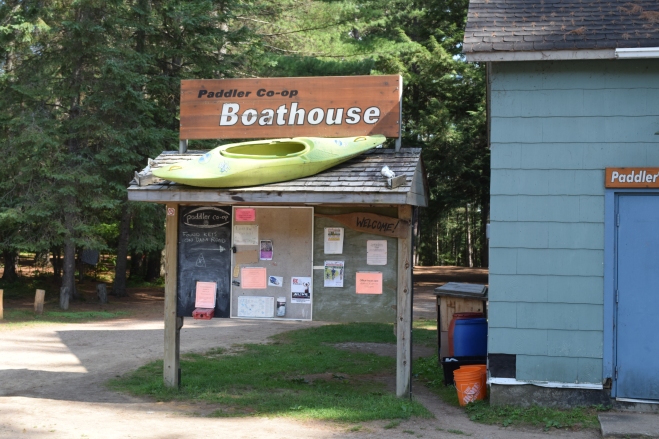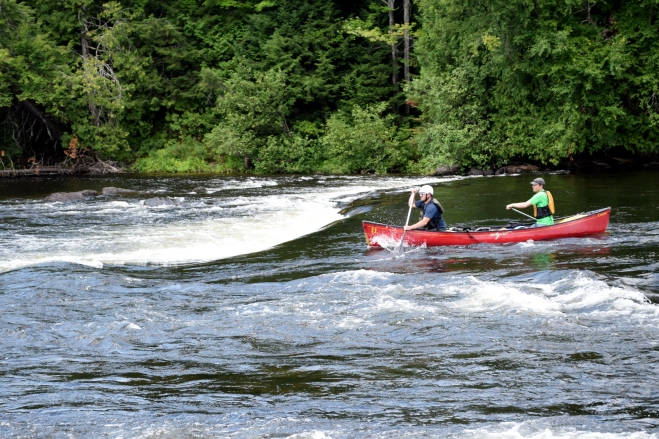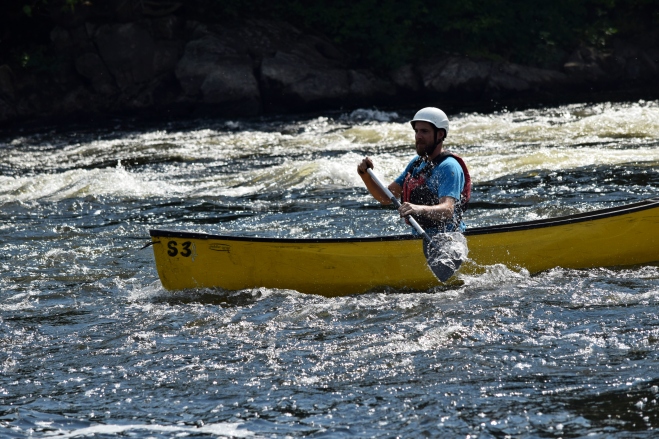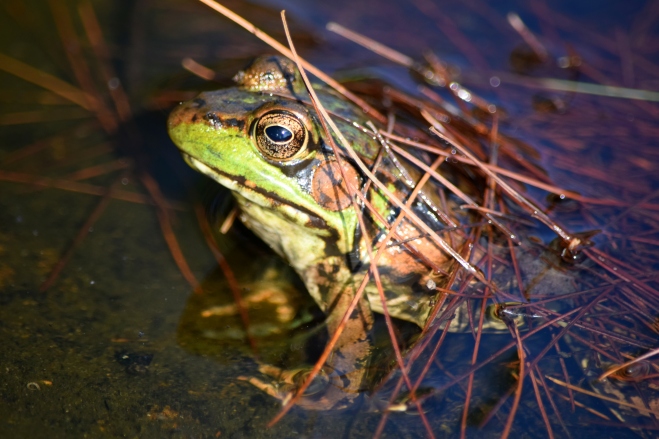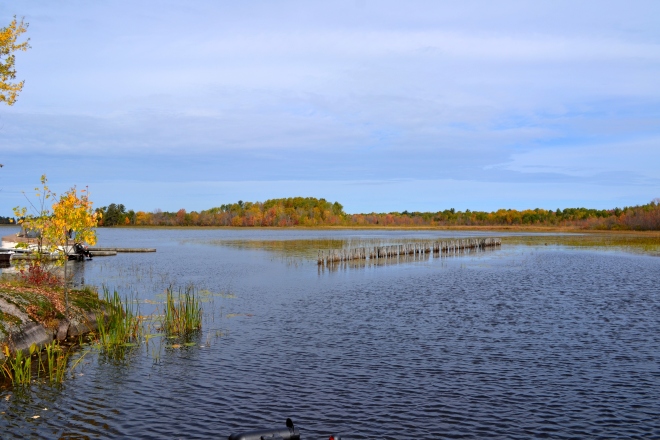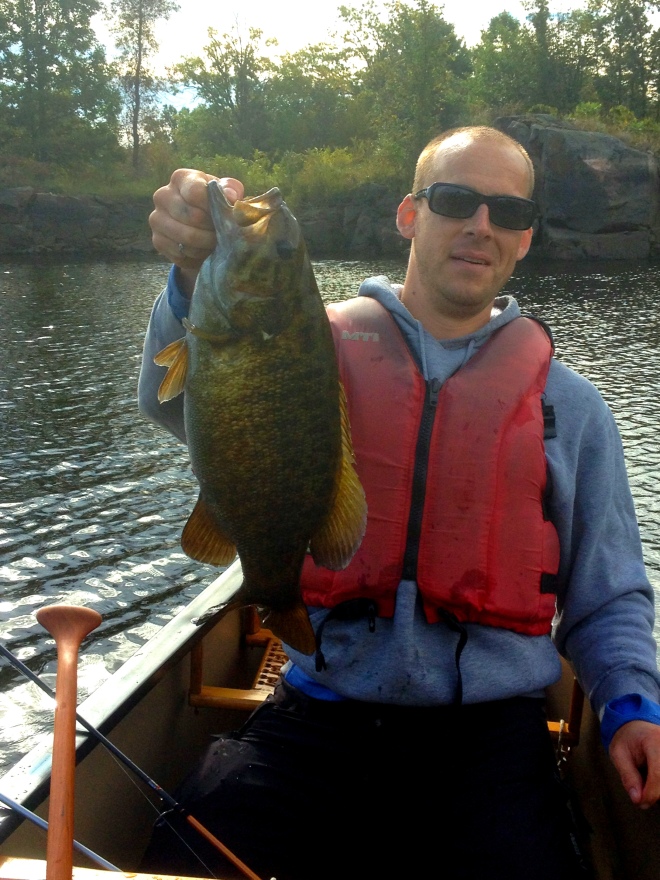Brook trout hold a place of reverence among many anglers for their colour, fighting ability, and taste. For some anglers like my dad they have attained a place of reverence among the freshwater species of our province. As a lad, I can recall growing up listening to him tell stories about fishing for these colourful creatures in the local streams around the outskirts of Bancroft. By his account they were plentiful, sensitive, yet easy to catch (if you knew how), and a source of a great number of fond memories. Personally, I can recall some of our camping trips to Algonquin park where my dad would pull our station wagon over and disappear down the side of the embankment, only to return with a few of these little creatures. Pan-fried brook trout over a campstove was my first real taste of wild food, and very likely one of the sparks that ignited my passion for fishing for these delicious fish.
Times change, populations grow, and land gets developed. In turn our, impact to the environment (at least locally in Ontario) sent the population of brook trout into somewhat of a nose dive in many areas. In the back of my mind I knew that development and things like agricultural run off can effect the water quality of small streams. But this effect really didn’t hit me hard until my dad reported back after a return visit to some of those streams a few years ago. I’m told he only caught a single trout for the whole trip. Sadly I felt like the days of bountiful brook trout were lost.
My best days fishing brook trout have been in the middle of Algonquin park, and in Gaspésie, Quebec. Fish were plentiful on both trips, however, in each case I had to work extremely hard, and sometimes travel for days, to find the places of historic abundance. Anytime I tried to catch them locally, I always ended up with an empty basket. After these local trips, my view of brook trout fishing was fairly pessimistic. My conclusion: good easy local brook trout fishing just didn’t exist any more in southern Ontario.
My pessimistic view changed during a grouse hunting/fishing trip this past fall, after having some unexpected success with the square tails in a not to distant location. Our goal was grouse, but we ended up pulling several brook trout out of the lakes on the way. Still uncertain about the fishing, I planned to return one day to fully explore the area. I reported my success to my uncle who was intrigued and suggested we do a winter trip. I got to work right away scouring the MNR fish online tool to scout the area, and contacted cottages in the area to secure accommodations. When the dust settled we had planned a three day trip planned for the area that was not too far for any of us to drive. I could tell you where we went, but in my experience, half the fun is finding these locations out for yourself. Fish Online
Day 1 arrived on January 18th, and we met at our rental cottage and prepared the snow mobiles and gear for a days run into the woods. Although we got off to a late morning start we were still hopefull. Afterall, there were five of us, two snowmobiles, an array of fishing rods and tackle. We could cover a lot of ground with that set up.

We started the trip on the lake where I had some success the previous fall and spread out along the shoreline. There was at least 12″ of ice wherever we drilled with a max of 14″ in some places. Simple live bait rigs with gads were the ticket and within the first 30 minutes, I had 3 fish on the ice. Another two were iced among the remaining members of our group and the fish kept biting. We ended the day with a respectable 10 fish iced, about the same lost at the hole, and countless more missed hits. Tired yet happy, we returned to our cottage for a celebratory beverage.

Fresh fish on ice!

We beat the sun up on the second day and started our trek back into some of the more remote lakes. The ride in was several kilometers and things got pretty hairy with three dudes on the back of a snowmobile. Half way in the three man machine was working a bit hard so we moved one of the guys to a towed sled. We resumed our trek and made it to the lakes. Thankfully I was the navigator on this trip which secured me a permanent position on one of the cushioned seats.

One of the gents with his first brook trout ever through the ice.

Fishing was tough on the second day, and we worked real hard moving around the lake to try and locate fish. Our efforts paid off and we racked up another 6 fish on the day, with the majority of them being bigger than the previous day. Shallow wood seemed to work well for us as well as rock points. Just like that, another satisfying, albeit hard, day was behind us.



Having satisfied ourselves on brookies over the first two days, we decided to switch things up on the third day and target a different lake that was stocked with splake. For those who don’t know, these fish are hybrids between a lake trout and a brook trout. This presents some added complexity to fishing for them as they have been known to behave like both species whenever the mood strikes them. With this knowledge in our minds, we varied our presentations with a mix of setlines and a couple jigging presentations in deeper water. As luck would have it, the splake were feeling brookish on the third day and while exploring the area with a depth finder, I looked back to see that my Gad had disappeared. Not sure what to expect, I began pulling up my line and eventually pulled my gad right out of the hole. Seconds later I felt a familiar tug and I set the hook on a beautiful 5lb splake. I eased the tank up from bottom and attempted to remove the line from the gad so I could use my rod. Murphy’s law kicked in and the line snapped….. I was left with a gad in one hand and the business end of the line in the other. With no more time to be gentle, I hauled the fish up and buried my arm shoulder deep in the hole so I could grab ahold of the fluorocarbon leader. The fish crested the hole and I finally took a breath.


Aside from the interesting fight, I also noted the deep gold colour of the belly of this fish. Most of the splake I have caught in the past were distinctly silvery, however this one seemed to lean towards its brook trout genes. I’m guessing the lake may have something to do with the colour.
This splake happened to be my largest of the species to date.

We visited one more small lake and added a few more brookies to our tally. All said and done, we caught about 22 brookies and one big splake between the 5 of us over the course of 2 and a half days.
Its not the big numbers I used to hear my dad talk about, but its definitely respectable for the size of the lakes we were on and for the species. Catching that splake was the cherry on top of an already amazing.
Stocked lakes. They are out there and are stocked for a reason, so go fish them! There are so many reasons to target these lakes like: the more you target stocked lakes, the less your focussing on natural strains of fish, which preserves the genetic diversity of our province. Also, part of your license fees go to stocking these lakes so why not reap some of the rewards from a program you help fund.
Cheers from the ice,
Albert




















 Everyone who has ever camped at bon echo or head up highway 41 knows the Kaladar General Store. There aren’t a whole lot of options for gas in the area and the KGS is a great spot for fuel and odds and ends you may need for your outdoor adventures.
Everyone who has ever camped at bon echo or head up highway 41 knows the Kaladar General Store. There aren’t a whole lot of options for gas in the area and the KGS is a great spot for fuel and odds and ends you may need for your outdoor adventures. Typical foggy morning landscapes from the Bancroft area.
Typical foggy morning landscapes from the Bancroft area.